In the present article, we will focus on the nuclear reaction examples and their detailed explanations.
Any two atomic nuclei or one atomic nucleus and a subatomic particle collide with each other to give one or more nuclides. Such processes are generally named nuclear reactions. The atomic nuclei which react are different from that of the nuclides that are produced due to the reactions.
In the upcoming section, let us discuss about different nuclear reaction examples.
Nuclear fission
A nucleus that is considered to be heavy has the ability to give two parts out of it through splitting. The resultant parts are found to be smaller than the parent or reacting nucleus. This kind of decay process is generally regarded as nuclear fission. The gamma rays are the most probable resultant that may possess few atomic particles (protons and neutrons). The fact, along with the daughter nuclei, we may also expect an enormous amount of energy to be released during the process. It can be one of the nuclear reactions examples.
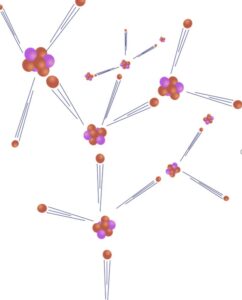
Nuclear fusion
A different kind of atomic nuclei is said to be formed when any two atoms tend to stick or else get combined together. The atomic nuclei formed may number from one to many, which are also accompanied by some of the subatomic particles, well-known ones to be protons and neutrons. Here also, we may expect a large quantity of energy to be released during the process. It is one of the nuclear reactions examples.
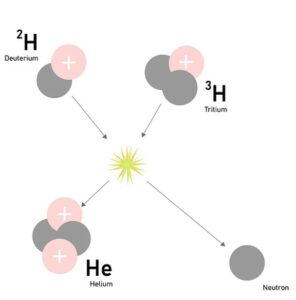
Alpha decay
Alpha decay is also one of the most common nuclear reactions. It can be one of the nuclear reactions examples. In alpha decay, we consider a nucleus regarded as the parent nuclei. Thus, taken parent nuclei go on to liberate a helium nucleus whose atomic mass number values four and its atomic number has a value of 2. So, when this helium nucleus or the alpha particle is emitted, the atomic mass number and atomic number corresponding to that of the daughter nuclei are supposed to decrease by 4 and 2, respectively. For example,
226Ra → 222Rn + 42α
Beta-decay
Beta-decay is also one of the most common nuclear reactions. It is one of the nuclear reactions examples. In beta decay, we consider a nucleus that can be regarded as the parent nuclei. Thus, taken parent nuclei go on to liberate a high-energy electron. So, when this electron or the beta particle is emitted, the atomic mass number corresponding to that of the daughter nuclei remains the same as that of the parent. An atomic number is supposed to decrease by one. For example,
146C → 147N + 0-1β
Gamma decay
Any two atomic nuclei or one atomic nucleus and a subatomic particle collide with each other to give one or more nuclides. It can be one of the nuclear reactions examples. Gamma decay usually takes place in a nucleus that is excited which may often be the result of radioactive decay of any other nucleus. When this excited nucleus goes back to the ground state, the occurrence of gamma emission can be seen. I.e., it basically accompanies the de-excitation of the excited nucleus. The example that depicts the gamma decay is given below,
234Th* → 234Th + ????
.
A nuclear reaction in the sun
The generation of energy and the variation in the composition of the sun is the two basic and prime things that are done by the nuclear reactions believed to take place in the sun; this is due to the fact that during the reaction, they usually form a heavy-nuclei. Other than nuclear fusion, the nuclear reaction that occurs in the sun is the stripping reaction. In which, from the atomic nuclei, all the electrons have been stripped off due to the presence of a very high temperature. It is one of the nuclear reactions examples.
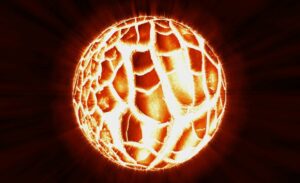
Therapy using radionuclide
For diagnosis and therapeutic purposes, radioactive elements can be utilized. The root of such radiation involved in medicine is the nuclear reaction that occurs between the nucleons. In such therapies, only the targeted tissues are focussed and are provided with the available radiation to avoid or minimize the effect on the surrounding tissues. It is also possible to achieve treatment and disease management with the help of radioactive elements undergoing nuclear reactions. It can be one of the nuclear reactions examples.
Production of subatomic particles
In the nuclear reaction, we can witness the formation of many products. One of them is the subatomic particle (protons and neutrons). It can be described by explaining the fusion reaction of hydrogen isotopes that, in general, takes place in the core of the sun and any other stars. It is one of the nuclear reactions examples. The atomic nuclei which react are different from that of the nuclides that are produced due to the reactions.
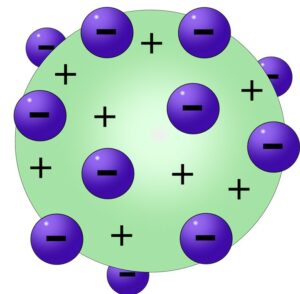
Radiocarbon dating
It can be one of the nuclear reactions examples. In order to estimate the age of the biological specimens, we need to measure the radiation profile of the materials, which can be done by radiocarbon dating. The technique utilizes a carbon isotope to achieve it. A decay time can be seen in carbon-14, an isotope of carbon. The time span of an element is basically calculated by knowing the ratio of carbon-14 to carbon-12; this is one of the archaeological uses of the nuclear reaction.

Nuclear moisture density gauges
Before progressing with the road construction, it is necessary to know and gain knowledge about the density and moisture content in the soil, which is usually in compacted layers; this can be achieved by the techniques that involve nuclear reaction, most generally known as the nuclear techniques. The suitability factor of soil for the construction of a road is determined by just evaluating the moisture content present in the soil. For such measurements, nuclear moisture density gauges are utilized in the form of testing devices. It is one of the nuclear reactions examples.
Radioactive isotopes
To increase the shelf life corresponding to the food products, they are usually imposed gamma radiation from any radioactive sources. The one that is commonly used is, cobalt-60. In several fruits and lives, the imposed gamma radiation force stops germination and premature ripening, which is accompanied by the killing of insects, parasites, and bacteria. It can be one of the nuclear reactions examples.
Radiation energy from the sun
Basically, the energy radiated from the sun is the result of nuclear fusion that takes place in the sun. During which, hydrogen isotopes fuse in order to give helium. Thus a nuclear reaction is responsible as it plays a key role in the generation of energy. It is one of the nuclear reaction examples. The atomic nuclei which react are different from that of the nuclides that are produced due to the reactions.
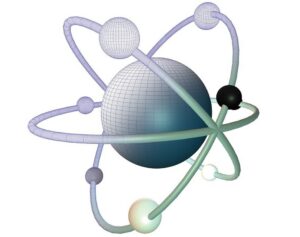
Compound nuclear reaction
In the compound nuclear reaction, the nucleus is basically provided by energy in the proximity of a high-energy particle or by the complete absorption of a low-energy particle. The atomic nuclei which react are different from that of the nuclides that are produced due to the reactions. By the acquaintance of energy, the nucleus is no more ‘fully bound’. Due to this, there will be an emission of neutrons. It can be one of the nuclear reactions examples.
Induced nuclear reaction
An atomic nucleus will be transformed by the influence of particles that are found to be the products of a decay process; this is nothing but an induced nuclear reaction. It is one of the nuclear reactions examples. The atomic nuclei which react are different from that of the nuclides that are produced due to the reactions. Any two atomic nuclei or one atomic nucleus and a subatomic particle collide with each other to give one or more nuclides
Frequently asked questions| FAQS
Nuclear fusion
A different kind of atomic nuclei is said to be formed when any two atoms tend to stick or else get combined together. The atomic nuclei formed may number from one to many, which are also accompanied by some of the subatomic particles, well-known ones to be protons and neutrons. Here also, we may expect a large quantity of energy to be released during the process.
Nuclear fission
A nucleus that is considered to be heavy has the ability to give two parts out of it through splitting. The resultant parts are found to be smaller than the parent or reacting nucleus. This kind of decay process is generally regarded as nuclear fission. The gamma rays are the most probable resultant that may possess few atomic particles (protons and neutrons). In fact, along with the daughter nuclei, we may also expect an enormous amount of energy to be released.
How does the sun withhold itself from collapsing due to gravity?
Other than nuclear fusion, the nuclear reaction that occurs in the sun is the stripping reaction.
The generation of energy and the variation in the composition of the sun is the two basic and prime things that are done by the nuclear reactions believed to take place in the sun; this is due to the fact that during the reaction, they usually form a heavy-nuclei.
In the stripping reaction, from the atomic nuclei, all the electrons have been stripped off due to the presence of a very high temperature.
Also Read:
- When does nuclear fusion begin
- Nuclear fuels examples
- Nuclear fusion process
- Is nuclear fusion possible
- Nuclear fusion in the sun
- Nuclear fusion examples
- Nuclear fusion waste
- Nuclear fusion in stars
- Is nuclear fusion renewable
- Nuclear fission examples
Hi…..I am Harshitha H N. I have completed my master’s in Physics from the University of Mysore with a specialization in Nuclear physics. I enjoy exploring new things in my free time. My article always aims to develop and bring some value to the table with relevant topics.
Let’s connect through LinkedIn-